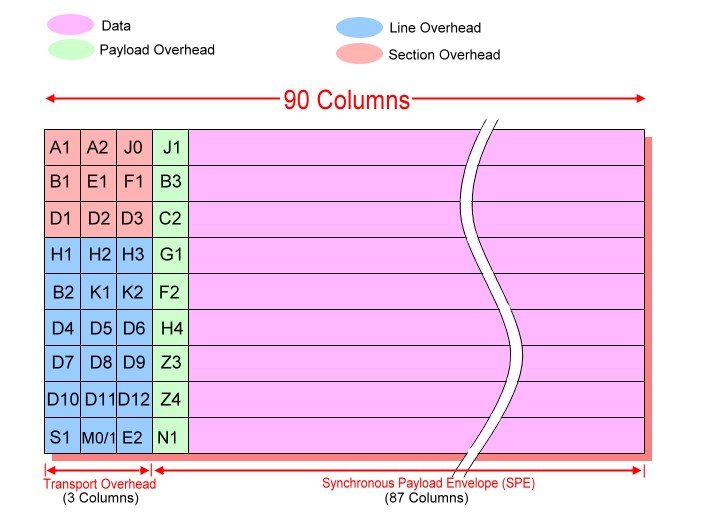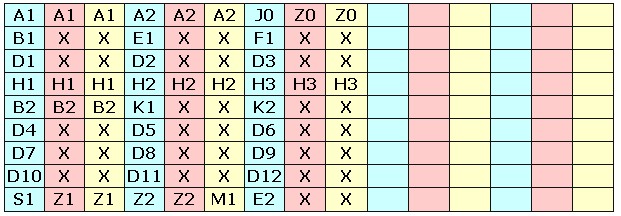|
< Previous: (
Introduction to SONET )
Table of Contents
Next: ( Transport Overhead ) >
Basic SONET Frame Structure:
The basic SONET frame is as shown in figure 2. This
signal is known as Synchronous Transport Signal
Level-1 (STS-1). It consists of 9 rows of 90 bytes i.e. a total of 810
bytes. It is transmitted from left to right and top to bottom. The two
dimensional figure is just for convenience. Actual transmission takes
place serially i.e. the left most byte in the top row is transmitted, then
the second byte in the first row and so on. After the 90th byte
in the first row the left most byte in the second row is transmitted and
it goes on. One more point to be noted is that msb is transmitted first
and the numbering of bits in a byte is as shown in figure-3.
The frame length is 125�s (i.e.
8000 frames per second). The STS-1 has a bit rate of 51.84Mbps. The frame
for the lowest SDH rate STM-1 contains 270 columns by 9 rows. We will
learn more about it later.

Figure-2

Figure-3
The first 3 columns of SONET frame are called Transport
Overhead (TOH). The remaining 87 columns are called Synchronous
Payload Envelope (SPE). The first column of SPE is called
Payload Overhead (POH). A point to be noted here is that every SONET frame
repeats every 125�s no matter how
fast the line speed gets. As line rate goes up SONET frame gets bigger,
just sufficient to keep the frame rate at 8000 frames per second.
SONET and SDH Interleaving:
If three STS-1s are byte interleaved, the resulting
frame is called STS-3. Byte interleaving means 1st byte of 1st
STS-1 (called A1) is transmitted, then A1 byte of 2nd STS-1,
then A1 byte of 3rd STS-1 and so on. Now the resultant rate of
the frame would be 3 times more. This multiplexing is carried out for all
levels of SONET and SDH. Because of this, SONET/SDH maintains a frame rate
of 125�s. See figure-4 in which different colors
for bytes of each frame are used to have clear understanding of
multiplexing and how higher order frames are generated. Note that not all
the overhead bytes in STS-1 frame are used in higher order frames. These
are represented as �X� in the figure-4.

Figure-4
|